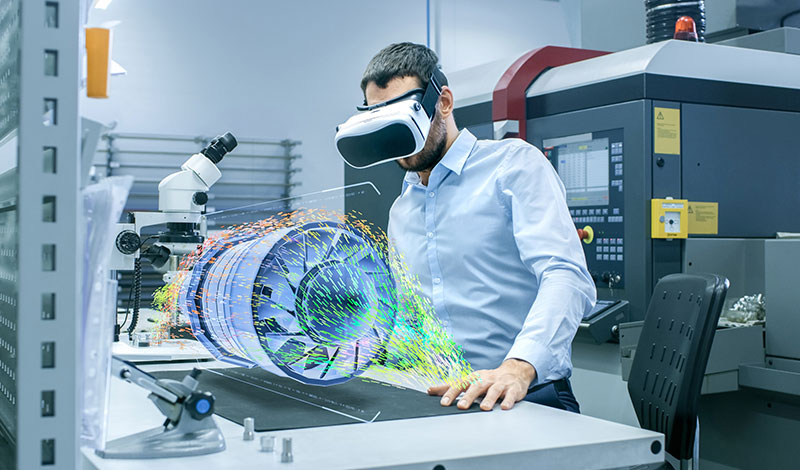
Posted on
In augmented reality (AR) and virtual reality (VR), the technology is, in many ways, still in its infancy, with new approaches and designs being developed to deliver the most authentic experience possible. Taking advantage of thin film deposition solutions is one way that AR/VR equipment manufacturers can produce higher quality designs and more competitive products.
Challenges in AR/VR Design
There are several challenges that manufacturers face when designing AR/VR technology:
- Delivering realistic visuals: For the optimum user experience, the AR/VR device or headset must display detailed, authentic-looking visuals, so that the user really feels like they are looking at real images. This requires enhanced optics for both types of technology, but particularly for AR. In VR technology, a computer-generated visual is all that’s relayed through the headset or glasses to the user. In AR, however, the technology combines authentic, real-environment images with an overlay of computer-generated images, making it trickier to cast realistic visuals. Each lens “eye” of an AR headset contains two prisms. One transmits light from the microdisplay of the computer-generated images. Light from the real world is transmitted through both prisms before reaching the user’s eye, which creates the overlay effect.
- Eliminating stray-light patterns: If stray-light patterns are transmitting through the display, they will cause viewing issues for the user. They can lead to lower image contrast, uneven haziness in the field of vision, and ghost images. AR and VR devices should be designed to eliminate stray light from the device, so that the user can have a more enjoyable, realistic experience without experiencing eye fatigue.
- Realizing low costs of production: To address the above challenges and offer a better user experience, manufacturers are developing innovative technologies as a solution. But in doing so, manufacturing costs become a concern. Manufacturers must find a way to design AR/VR headsets with the highest quality visuals while also maintaining cost effectiveness in order to meet realistic consumer price points for widespread adoption and still net a strong ROI.
Main Coating Types
The three primary types of coatings used for AR/VR applications are anti-reflective coatings, beamsplitters and metal coatings.
Anti-reflective: In VR applications, optical head-tracking systems use lasers or other light sources as detectors to determine a user’s position or head movement. Anti-reflective coatings are used on these detectors to eliminate stray light patterns and ensure accuracy of movement and position. In both AR and VR applications, anti-reflective coatings are also used to eliminate ghost images and haziness, as well as to maximize light transmission to reduce overall power requirements. These coatings are manufactured as multi-layer optical stacks.
Beam splitters: AR applications use beamsplitters heavily to combine computer-generated images with authentic light that’s transmitted. Repeatable, reliable deposition technology can help achieve high-quality beamsplitters that meet desired specs. Like anti-reflective coatings, they are also manufactured as multi-layer optical stacks.
Metals: Metal coatings are commonly used to create mirrors, which are critical for transmitting light and images through AR/VR headsets to the user’s eye. Consistent, high-quality mirror coatings help deliver the most realistic visuals, improving the user experience.
It’s important for AR/VR manufacturers to employ thin film deposition equipment that prioritizes high-quality coatings and repeatable results. Using such technology will lower production costs considerably, so that manufacturers can focus on innovating and developing AR/VR devices that are more comfortable and realistic for users.
For more, read the case study about how Denton’s Phoenix 400 sputtering system line helped an AR developer boost in-line production capabilities.